

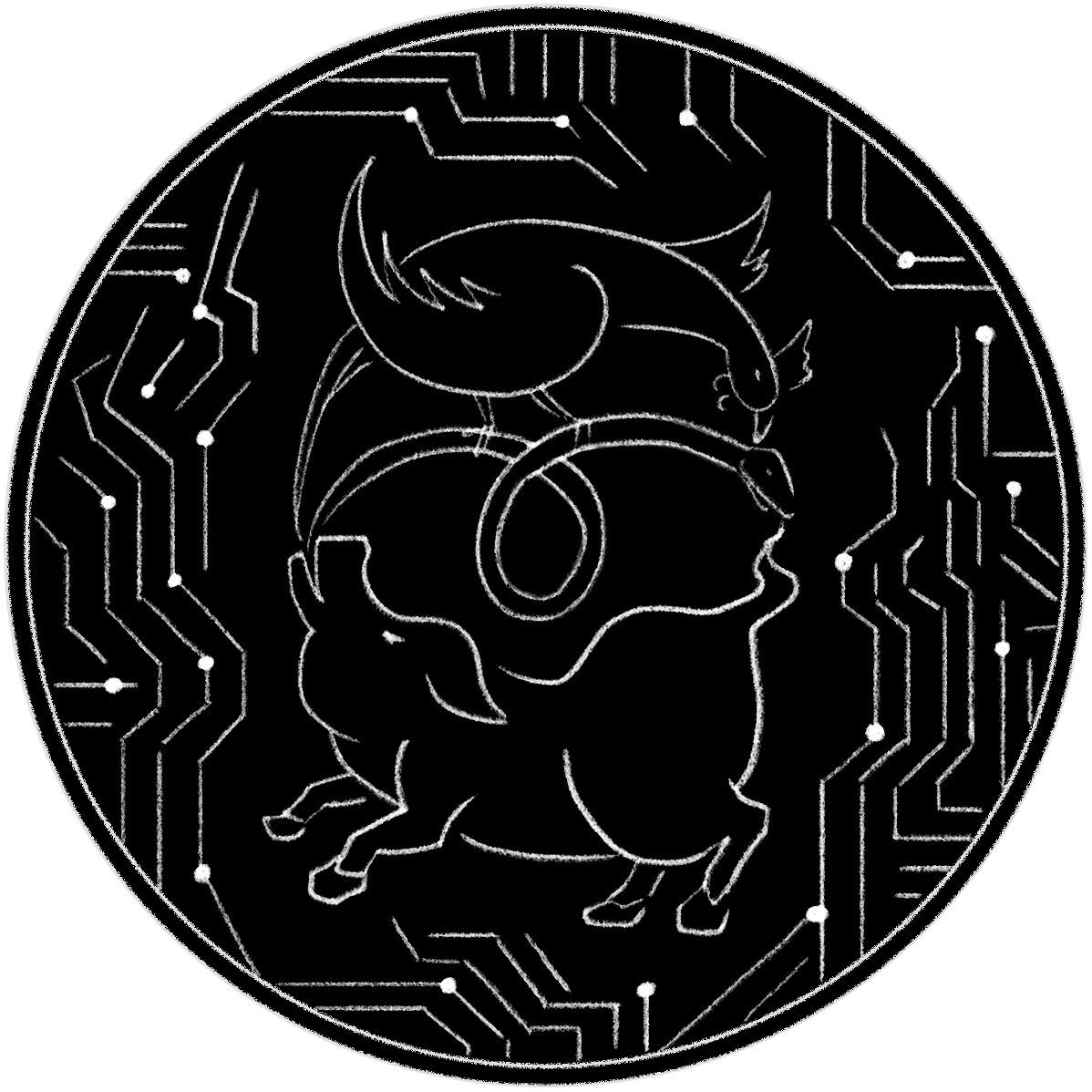
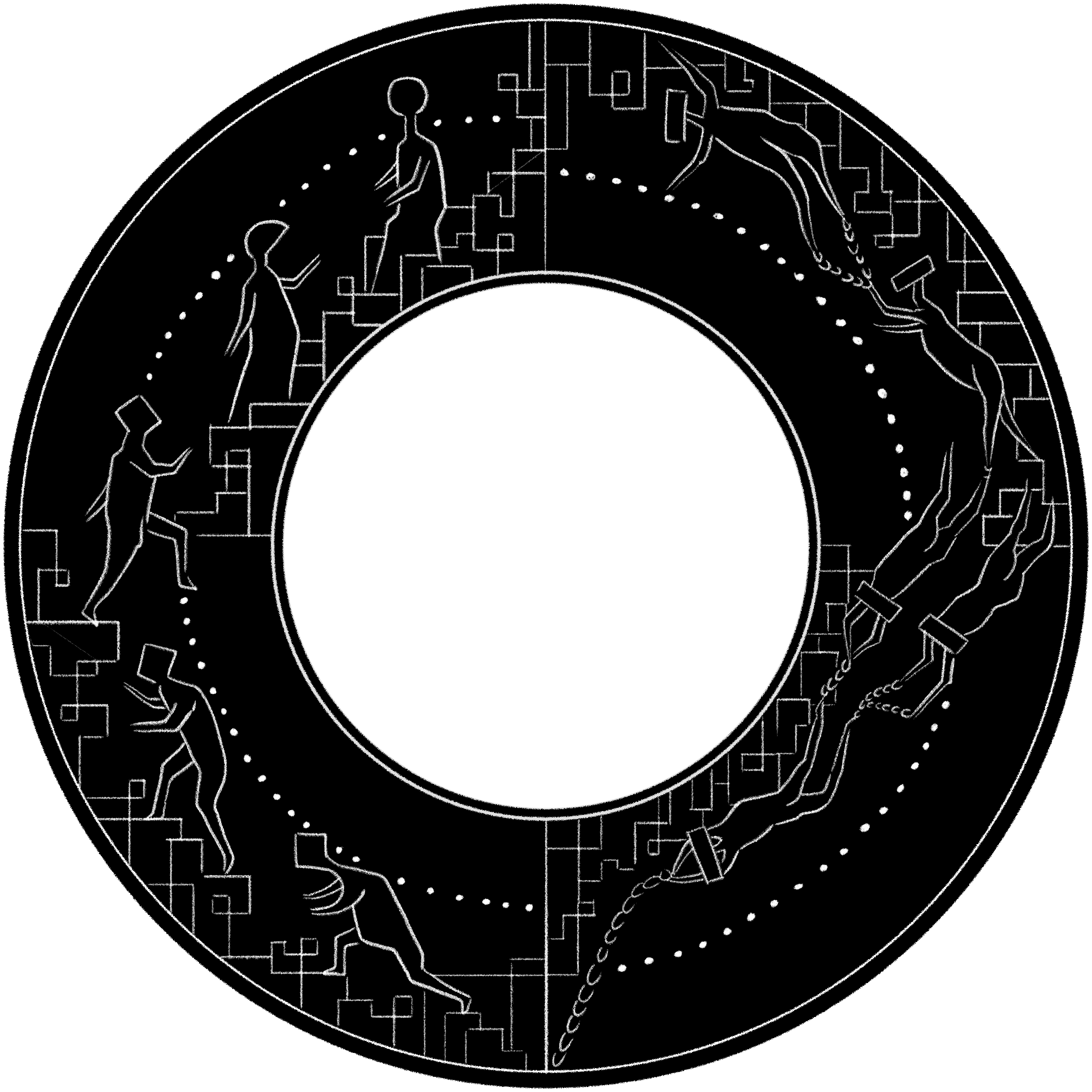

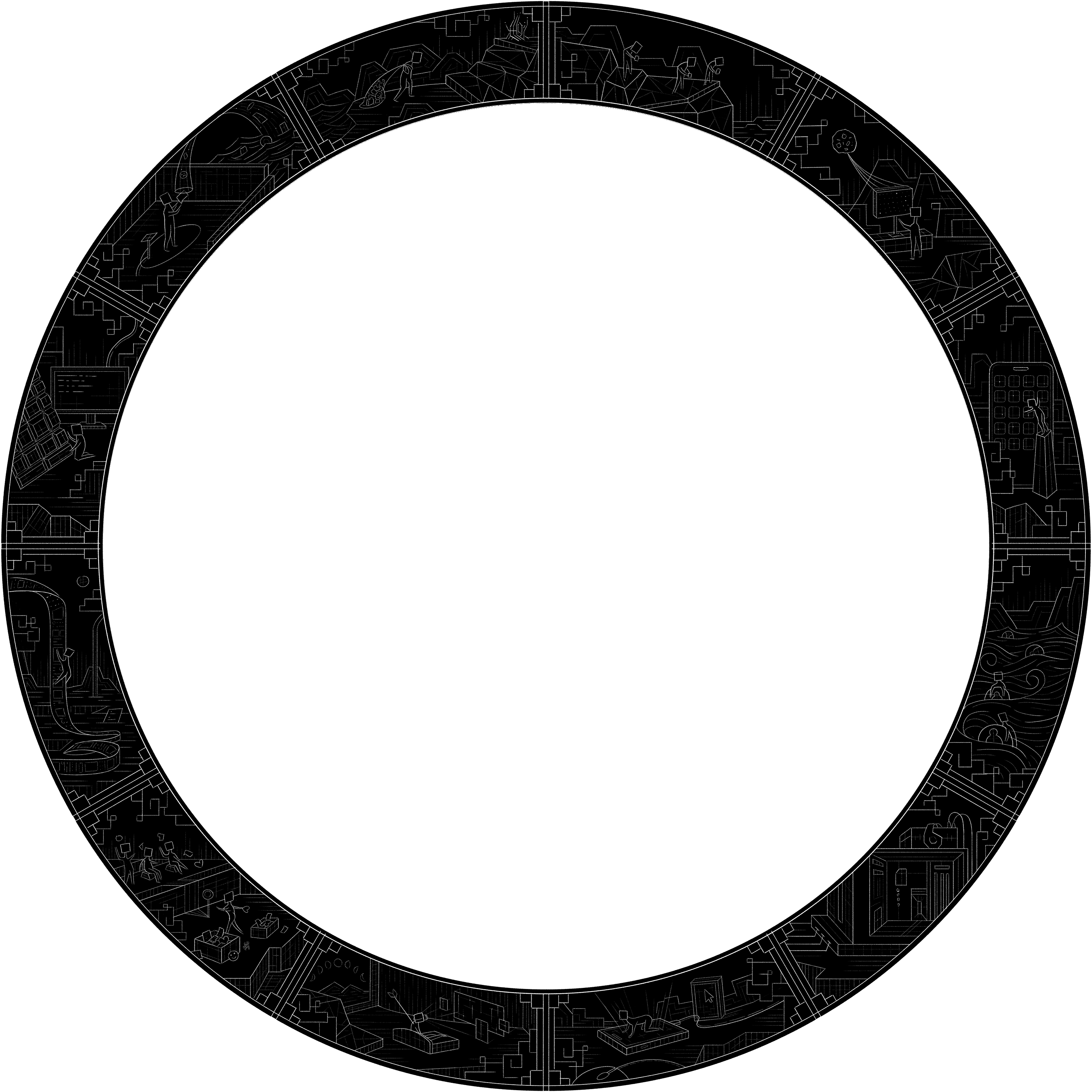

At the heart of this cycle is the Three Poisons (Trivisa) that perpetuate our suffering, embodied by three animals:
Rooster - Anger/Hatred
Snake - Greed/Desire
Pig - Ignorance/Delusion
Since ignorance is the root of the other afflictive emotions, the tails of the rooster and the snake emerge from the pig's mouth. Together, they are grabbing each other to form a ring that indicates the interdependent nature of all three causes of suffering.
These primal forces, unchanged from the original Bhavachakra, continue to drive us even in our digital age. Ignorance, greed, and hatred fuel our online interactions, and as we build our new digital world, we infuse it with these same poisons, perpetuating the cycle of suffering into these new realms. The three animals are engulfed in flames, a central Buddhist metaphor for the destructive nature of afflictive emotions. Here, the flames are stylized as circuit lines, forming a fiery motherboard that radiates its influence into every corner of the mandala.
The karma circle, split in two, mirrors the duality of our actions - the virtuous and the harmful. Our choices, fueled by afflictive emotions, accumulate karma, propelling us upward or downward in this relentless cycle of existence.
The digital world, though intangible, is not exempt. Every unseen click, every anonymous comment leaves a karmic trace. Let not the illusion of digital freedom blind you; karma flows as surely as data, its consequences inescapable.
My adaptation, Cyberbhavachakra - the Wheel of Digital Life, retains the original structure of the Bhavachakra, while at the same time reflecting the new digital world. The original six realms (Gods, Demi-Gods, Human, Animals, Hungry Ghost, and Hell) have transformed into the Internet, Cyborgs, Human Users, Autonomous AIs, Servile AIs, and the Lost. Data and consciousness traverse these realms, yet despite our advancements, we remain trapped in cycles. Our original world is already a part of Samsara, and the digital world we're creating exists within that same invisible loop.


The 12 Dependent Originations - Pratityasamutpada, a key doctrine of Buddhist philosophy across all schools, illuminates the interconnectedness of existence. It posits that all phenomena arise dependent on other phenomena: "if this exists, that exists; if this ceases to exist, that also ceases to exist." This fundamental principle of interdependence applies universally, even within the digital realm.


On the exterior edge of the wheel is the machine of Impermanence. Impermanence, or anitya, is a core Buddhist tenet emphasizing the constant flux and inevitable decay of all things, both physical and mental. Buddhism asserts that everything, from human life to the cosmos itself, is in a perpetual state of arising, changing, and dissolving. This cycle of birth, death, and rebirth underscores
the fleeting nature of existence.
This concept of impermanence extends to all phenomena, whether tangible or intangible. All things, being dependently originated, are inherently subject to change and dissolution. Even the digital world is not exempt. Built on fleeting lines of code and the interplay of hardware and software, the digital realm is inherently impermanent. Websites vanish, software becomes obsolete, and data decays. Yet, despite its ephemeral nature, the digital world generates genuine experiences, emotions, and even suffering.
This paradox underscores the Buddhist teaching that even in a world of fleeting digital constructs, the cycle of arising, change, and cessation—and the suffering it entails—persists.

Yet, escape is possible. In the original Wheel of Life, a moon is floating outside the Samsara.
The moon symbolizes Nirvana, the ultimate state of liberation from desire and suffering. This state represents the "extinction" of the Three Poisons that fuel the cycle of rebirth and death, known as samsara. Nirvana transcends space and time, existing as an indescribable state of peace and enlightenment.
Even in the digital world, this symbolic moon persists as a reminder that Nirvana remains attainable. The Buddha-nature,the inherent potential for enlightenment, resides within each of us. By recognizing the impermanent nature of reality and extinguishing the flames of the Three Poisons, we can liberate ourselves from the cycle of suffering, regardless of whether our existence is physical or digital.

Cyberbhavachakra is the visual outcome of WEST-T480-001, a class I took in Summer 2024. It was an experimental course where students gathered to choose a topic, conduct research, and produce a visual response. We centered on Digital Twin, a theme that reflects our shared curiosity about how the physical and digital worlds intersect - and what role humans play in between.
At the same time, I was trying to break free from my addiction to social media, realizing how much it distracted me from the real world. This experience pushed me to question: is social media another realm where we carry multiple personas and lead parallel lives? If so, does karma still apply there? And how closely does that emerging digital world mirror the one we already live in? As someone who grew up with Buddhism, I felt called to revisit its teachings and explore them through a new lens. After 2-3 weeks of research into Buddhist literature, I developed a digital interpretation of Samsara - the piece you see above.
It was a meaningful experience to look back on the Buddhist teachings and look forward to the future we are building. I hope this piece gives you a new way of seeing the digital world, and a reminder to be a mindful digital citizen.
Special thanks to Talia Greene for guiding and encouraging me throughout the process, and to Micah Lockman-Fine for carrying the class theme into what is now the Digital Twin exhibition.
About me:
I’m Tin Ta, an interdisciplinary designer and Graphic Design student at Drexel’s Westphal College of Media Arts & Design. My work explores how design can shape and transform the way we experience the world. I’m especially interested in the intersection of technology and religion, and I hope to create more projects like Cyberbhavachakra that dive into those themes.
Instagram: @taka_tinn
LinkedIn: Tin Ta
If you’re interested in the topic, you can check out my research playground with sketches, process work, mind maps, and links to dive deeper.
Access here
Exit
